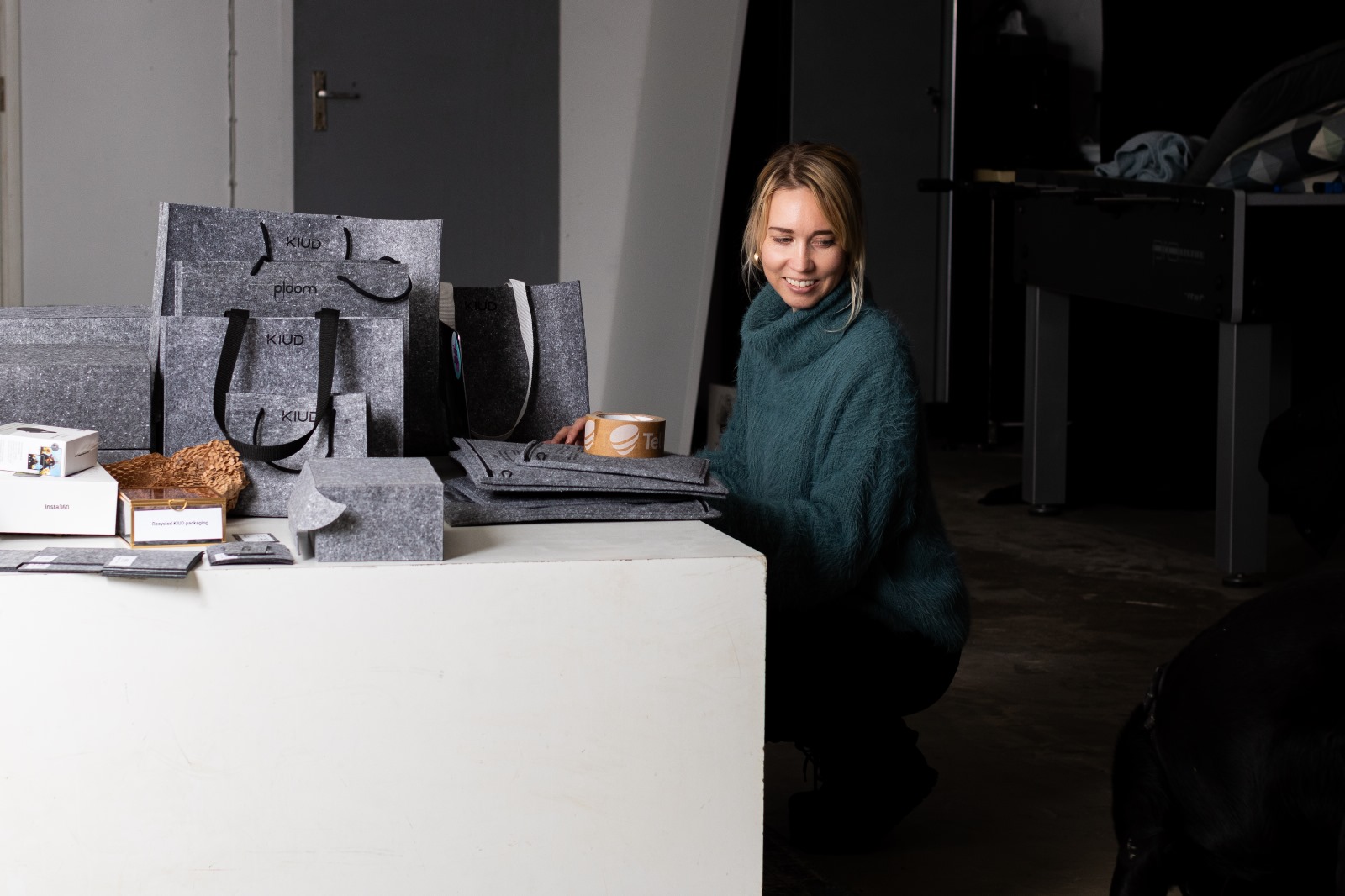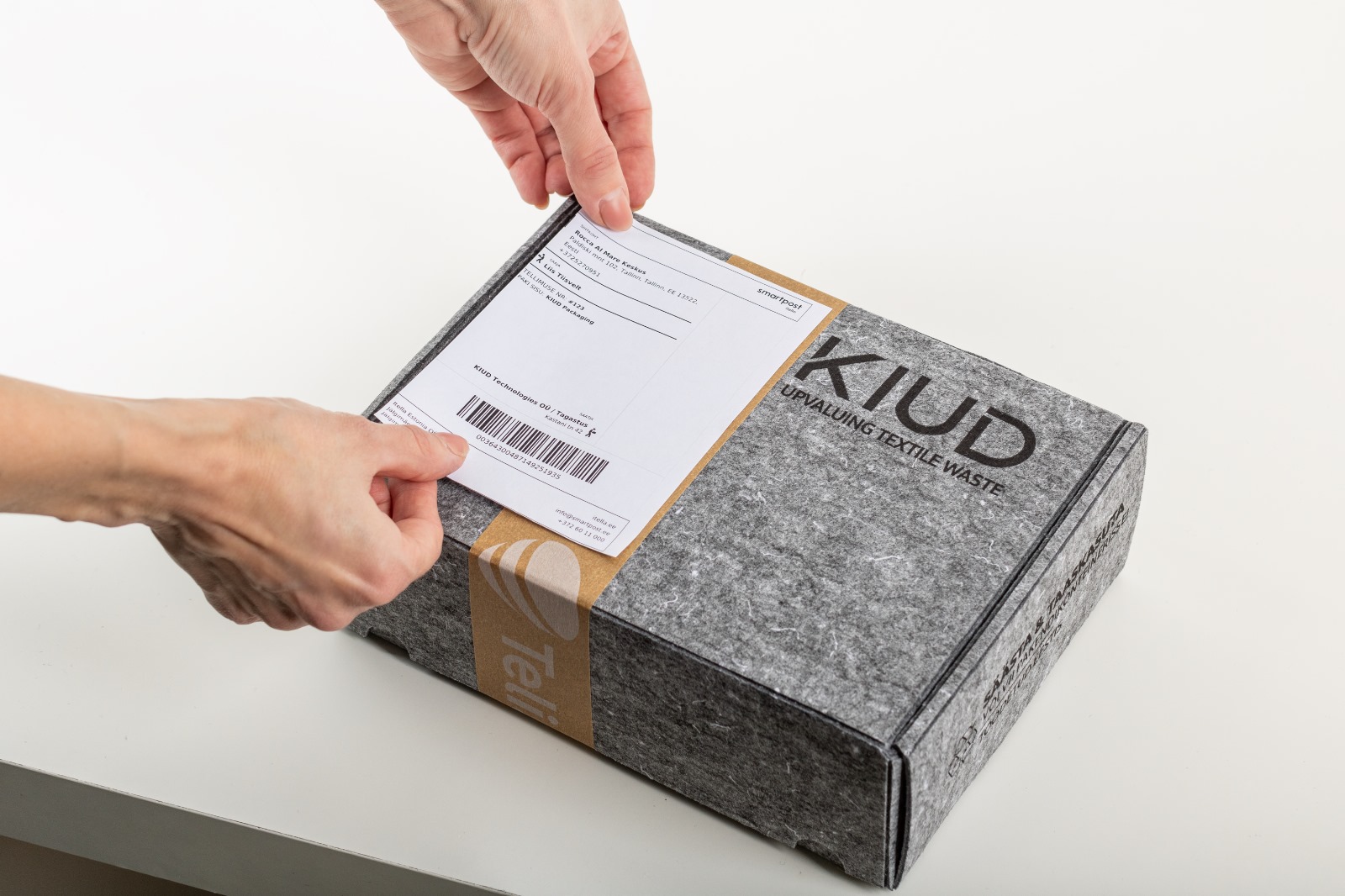

In the build-up to this year’s World Cleanup Day, one conversation stands out in the fight against waste—an inspiring talk with Kaie Kaas, co-founder and CEO of KIUD. As part of our interview series shining light on the issue of textiles waste, Kaie shared her journey from the fashion industry to the frontlines of sustainable innovation is not only compelling but also a much-needed blueprint for circular business models.
KIUD’s mission is simple yet ambitious: transforming textile waste into durable, reusable packaging materials. But behind this idea lies a complex web of industrial challenges, personal accountability, and a shared vision for a more sustainable future.
Kaie and her co-founder Liis started in the fashion industry, not in packaging. With over 5.5 million garments produced between the two of them, they had an intimate understanding of the scale of the problem they had helped create. According to global statistics, 75% of clothing ends up in landfills, a staggering figure that inspired both women to act.
Liis, then studying textile engineering, created a prototype of a packaging box using textile waste. Kaie was immediately struck by the potential. “This is a great idea,” she recalls thinking. The realisation wasn’t just environmental, it was also emotional. A combination of passion, motivation, and guilt built the foundations for KIUD. Liis and Kaie’s personal accountability became a driving force to build something better.
While plastic is being phased out, many businesses have replaced it with cardboard and paper-based packaging. But this shift isn't without consequence. “Now we’re cutting down 300,000 trees every hour to keep up with packaging demand,” Kaie emphasises.
The truth is, replacing one problem material with another unsustainable one is not progress, it’s deferral. That’s where KIUD offers a genuinely circular alternative. By using synthetic and mixed-fibre textile waste—which makes up 63% of global textile waste—KIUD transforms discarded material into durable packaging without relying on virgin resources.
Through a thermo-mechanical compression process, synthetic fibres within the waste act as a natural binder. “No added chemicals, no adhesives. Just heat and pressure,” says Kaie. Their packaging is not only robust and functional, but it also actively diverts problematic waste from landfills and incinerators.
KIUD began by sourcing cut-offs from Estonian manufacturers: scraps from the production of pillows, mattresses, and other home textiles. These fragments are typically too small to be reused, yet perfectly suitable for KIUD’s needs.
But the vision goes further. KIUD is actively working toward integrating post-consumer textile waste into their supply stream. In a current pilot with a major client, KIUD is recycling used uniforms into packaging that the same company then reuses, creating a rare closed-loop system.
This system isn’t just about innovation, it’s about accountability and circularity. “You can’t just throw any textile into the mix,” Kaie explains. “We have to control the formula to maintain quality.” The team has mastered handling synthetics and mixed fibres, which are typically the most difficult to recycle, by leveraging their chemical-free, heat-based method.
The idea of repurposing textile waste into packaging might seem obvious. So why hasn’t it caught on? According to Kaie, the answer is simple: it’s hard. Mixed fibres are notoriously hard to recycle. Separating materials like cotton and polyester often requires expensive chemical processes, while mechanical methods can damage fibres beyond reuse.
Infrastructure adds another layer of complexity. Most systems focus on collection or recycling, but few connect the full chain from sorting to new product creation. This fragmentation makes it hard for small innovators to scale without addressing multiple gaps themselves. Kaie believes the solution requires a holistic approach across the entire textile lifecycle—from collection and sorting to innovation and design.

Despite the challenges, change is coming. The EU is tightening regulations: textile waste exports are being restricted, and by 2027, companies must take financial responsibility for the waste they produce. The Packaging and Packaging Waste Regulation (PPWR) also requires 40% of e-commerce packaging to be reusable by 2030.
But even with policy support, startups can’t survive without early adopters. “We see a split,” says Kaie. “Some companies are eager to innovate, while others wait until the last possible moment.” For KIUD, legislation isn’t just a helping hand. It’s a lifeline for proving the business case for circular, sustainable packaging.
When asked what one global policy she would implement, Kaie doesn’t hesitate. “Make it mandatory for large corporations to pilot at least one new sustainable solution every year.” Too often, startups struggle because big companies are unwilling to take risks or commit to pilot programmes. Yet these companies are best positioned to validate, scale, and fund breakthrough ideas.
“Startups can’t change the world alone,” she adds. “But if corporations are required to try, some of those pilots will succeed, and that’s how real innovation happens.”
Kaie’s advice to aspiring founders is both practical and heartfelt: “Make life easier, better, and happier.” Whether you’re working in AI, logistics, or sustainability, your product should relieve stress, remove friction, and simplify choices. Especially in sustainability, where consumers are overwhelmed by complexity, products that make it easy to do the right thing will always stand out. Meaningful change often begins with small, practical wins—not massive systemic overhauls. “Just help people find the right thing more easily. That’s where the magic starts.”
For KIUD, the biggest win isn’t just regulatory alignment or pilot success—it’s customer satisfaction. “When our clients told us our packaging exceeded their expectations—strong, functional, and even cost-effective—it meant everything to us,” Kaie shares. That feedback proves what KIUD set out to show: circular solutions can still deliver on quality.

KIUD’s story is not just about packaging or textile waste. It’s about transformation. Turning guilt into purpose and waste into value. From overlooked scraps to high-value solutions. From overproduction to innovation. As Kaie sums up, with clarity and conviction: “Let’s clean up the world.”

